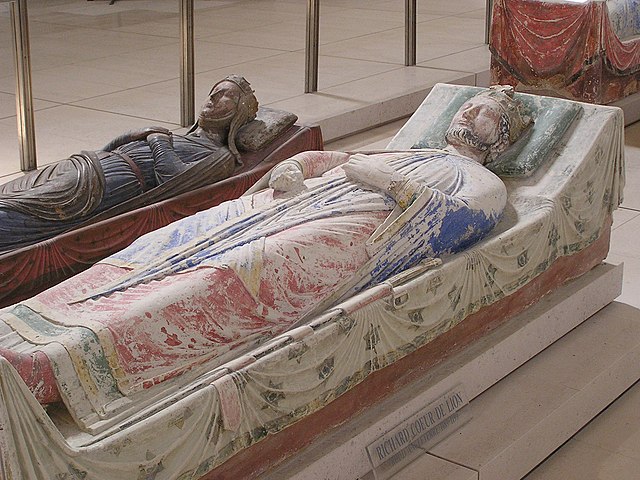Tomb of Edward, the Black Prince
The tomb of Edward, the Black Prince, was built in the 14th century for Edward of Woodstock. He was the son of Edward III of England and heir apparent to the English throne until his early death from dysentery aged 45. Due to his role in the Hundred Years' War and his characteristic black plate armour, Edward became known to history as "the Black Prince". Aware that he was dying and mindful of his legacy, his will specified his desired place of burial, and contained detailed stipulations as to the design of his tomb and that it be located in the Trinity Chapel of Canterbury Cathedral, in Kent, England, where his body is still interred.
Tomb of Edward, the Black Prince
Edward portrayed c. 1440–1450 wearing a blue mantle over plate armour and a surcoat. Bruges Garter Book, British Library
The Black Prince at Crécy by Julian Russell Story, 1888. Telfair Museums, Savannah, Georgia, United States
Detail of the armour
A tomb effigy is a sculpted effigy of a deceased person usually shown lying recumbent on a rectangular slab, presented in full ceremonious dress or wrapped in a shroud, and shown either dying or shortly after death. Although such funerary and commemorative reliefs were first developed in Ancient Egyptian and Etruscan cultures, they appear most numerously in Western Europe tombs from the later 11th century, in a style that continued in use through the Renaissance and early modern period, and are still sometimes used. They typically represent the deceased in a state of "eternal repose", with hands folded in prayer, lying on a pillow, awaiting resurrection. A husband and wife may be depicted lying side by side.
Double tomb of Richard I of England (Richard the Lionheart) and Isabella of Angoulême. Fontevraud Abbey, Anjou, France
Effigies of Henry II of France and Catherine de' Medici, c. 1561–1573. Basilica of Saint-Denis, France
Limestone Ka statue of Djoser from his pyramid serdab. 27th century BC
Coffin of Neskhons, c. 945-715 BC, Cleveland Museum of Art, Ohio








